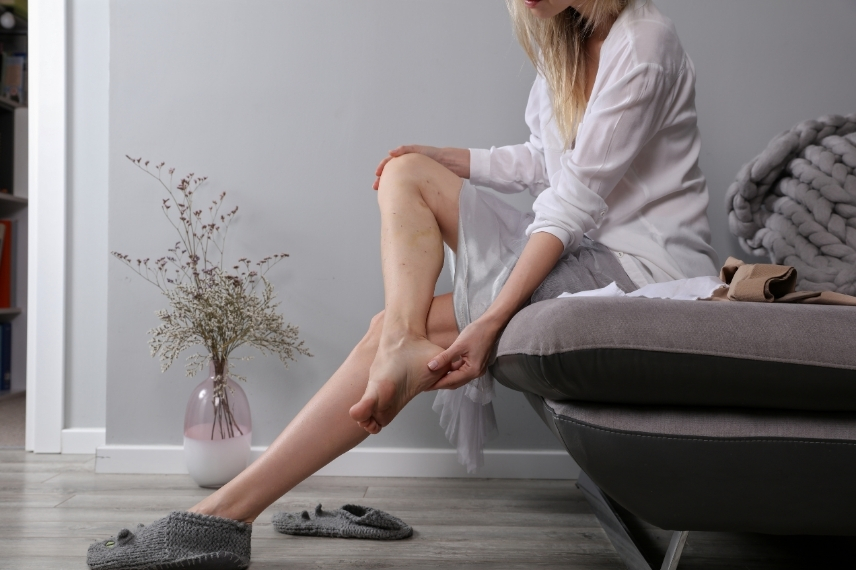
Vein insufficiency—particularly in the legs—is a progressive condition that can lead to varicose veins, swelling, fatigue, and in advanced cases, skin changes or ulcers. While medical treatments such as sclerotherapy or radiofrequency ablation (RFA) are effective when needed, many individuals can delay or reduce the severity of venous disease by adopting proactive daily habits.
This article outlines how to care for your vein health through early prevention, especially if you have a family history, and provides practical strategies for daily movement, lifestyle adjustments, and targeted exercises.
Why Is Vein Health Important?
Veins are responsible for returning blood to the heart. In the legs, they work against gravity, relying on:
- Functional valves
- Muscle contractions to push blood upward
- Elastic vein walls to maintain flow
When any of these mechanisms weaken, blood can pool in the lower legs, leading to chronic venous insufficiency.
Who Is at Risk?
You may be at higher risk if you:
- Have a family history of varicose veins or leg swelling
- Are female (due to hormonal influences)
- Have had pregnancies
- Sit or stand for long periods
- Are overweight
- Are over the age of 40
- Lead a sedentary lifestyle
Genetic predisposition cannot be changed, but lifestyle factors can be managed early to protect long-term vein function.
What Can You Do to Protect Your Vein Health?
✅ 1. Stay Physically Active
Movement activates the calf muscle pump, a key mechanism for venous return. Lack of movement leads to stagnation and pressure buildup in the veins.
Recommended daily movements:
- Walk for at least 30 minutes per day
- Avoid sitting or standing in one position for more than 45–60 minutes
- Stretch or flex ankles and calves while seated (especially during travel or desk work)
✅ 2. Perform Simple Vein-Boosting Exercises
Here are 3 simple exercises you can do daily to support venous return:
- Ankle Pumps
- Sit or lie down
- Flex your feet back and forth slowly
- Repeat 20–30 times per leg
- Stimulates blood flow from feet toward the heart
- Heel Raises
- Stand with feet shoulder-width apart
- Slowly raise your heels off the ground
- Lower back down with control
- Repeat 2 sets of 15–20 repetitions
- Strengthens calf muscles, supports vein function
- Leg Elevation
- Lie on your back
- Place legs on a pillow or up against the wall
- Maintain for 15 minutes daily
- Reduces venous pressure and swelling
✅ 3. Maintain a Healthy Weight
Excess body weight puts additional pressure on lower extremity veins. Even modest weight loss reduces venous pressure and improves symptoms like heaviness or leg swelling.
✅ 4. Use Compression When Needed
Compression stockings support the vein walls and help direct blood flow upward. They may be recommended for:
- Individuals with early-stage varicose veins
- Those with long-standing occupations
- Frequent travelers or during pregnancy
✅ 5. Avoid Risk-Enhancing Habits
- Avoid prolonged hot baths or saunas, which can dilate veins
- Refrain from crossing your legs for extended periods
- Limit high-heeled shoe use, which weakens calf muscle engagement
- Protect your skin from sun exposure, especially for facial veins
When Should Preventive Measures Begin?
If you have a family history of vein disease, prevention should begin as early as the 20s or 30s. Early interventions may delay or even prevent the development of symptoms later in life.
Conclusion
Healthy veins are essential for long-term circulatory and leg health. While some risk factors such as genetics cannot be changed, others—like inactivity, posture, and weight—can be proactively addressed.
A movement-rich lifestyle, daily leg exercises, and early awareness, especially for those with a family history, are powerful tools in maintaining vein function and preventing complications. Even small daily actions—like flexing your ankles at your desk or walking after meals—can make a significant difference over time.


